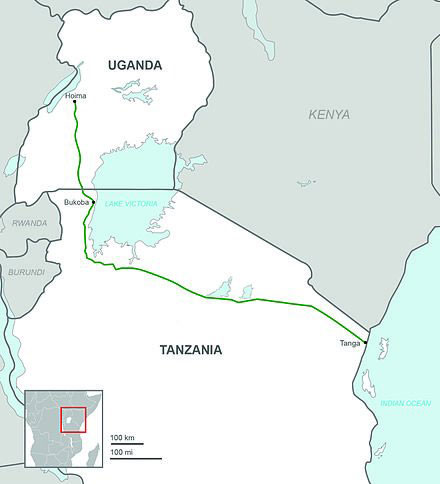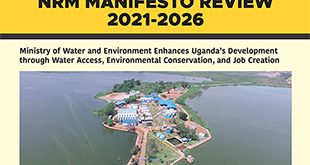
Kampala, Uganda | THE INDEPENDENT | The Minister of Energy and Mineral Development, Mary Kitutu has given an account of what her ministry has been doing over the last five years during the 2021 NRM Manifesto Week. The manifesto implementation that is running from 4th to 11th May aims at giving the people of Uganda accountability of what the ruling Government through its various ministries, departments and agencies (MDAs) has done over the period 2016 -2021.
The mandate of the currently elected government is ending in May as the President will be sworn in on May 12.
Minister Kitutu said there is steady progress in implementation of the manifesto pledges in the energy and mineral sector. She singled out the generation more electricity and extension of electricity to nearly all district headquarters.
“We are working hard to ensure that everyone has electricity connected to their homes,” said Dr. Kitutu. The percentage of Ugandans with electricity connection is 27%.
Through the Electricity Connection Policy over 270,000 homes have been connected before the policy was suspended last year due to challenges at Rural Electrification Agency (REA). With the lifting of the suspension on rural connection policy, REA has acquired connection materials.

Now that the policy has been reviewed, the agency has a plan to connect at least 300,000 homes annually. In the next five years at least 1 million homes will be connected if the loan that Government is negotiating with the World Bank comes through,” says Joan Mutyaba of REA executive director.
ERA is piloting a Charcoal to power tariff at Mulago Hospital. This is where people are encouraged to use electricity to cook instead of Charcoal which negatively affects the environment. This initiative will later be rolled out to domestic power consumers. If more people consume more electricity then the tariff goes down.
On power Loss Reduction: Distribution loses stand at 14% from 18.6% in 2016. Electricity loss reduction initiatives being implemented include: meter installation audits, use of technology like smart meters for large customers, billing efficiency, public awareness and other commercial loss reduction strategies.
As regards, the oil and gas sector, the minister listed the signing of the East African Community Oil Pipeline (EACOP) host agreement with Tanzania as one of the key milestones. The EACOP which is a 1,445km from Hoima to Tanga in Tanzania will transport crude oil for export. Uganda estimates over US$15 billion from the oil and gas sector opportunities. The minister of energy encourages Ugandans to get more interested in the sector.

On building an oil refinery in Hoima with capacity to produce 60,000 barrels per day, in April 2018 entered into a Project Framework Agreement (PFA) with the Albertine Graben Refinery Consortium (AGRC) as the Lead Investor to develop the refinery in Kabaale, Hoima. “As now the design of the refinery is complete,” says Minister Kitutu, adding that once completed commercial production of oil will begin in 2025. The refinery will produce Liquefied Petroleum Gas (LPG), Petrol, Diesel, Jet Fuel and Heavy Fuel Oil (HFO).
The Refinery Development Project includes a 213 km products pipeline from Hoima to Mpigi District, and it is expected to cost about USD 3.5 Billion and will have Debt (70%) and Equity (30%).
In order to support the oil and gas development in the Albertine region, an international airport is being constructed at Kabaale Hoima. Once completed, this will be the second international airport in the country. The Kabaale Airport and Terminal Master plan and detailed engineering designs for phase 1 were completed. The construction of the Phase I of the airport commenced and is 40% complete.
At the same time, Uganda is exploring opportunities of using its uranium deposits to develop nuclear power for peace purposes like generation of electricity and medical use like in the treatment of cancer. Already a memorandum of understanding has been signed with Russian State Atomic Energy Cooperation and another one with China National Nuclear Corporation. The MoUs are about developing a nuclear power infrastructure for education and training, nuclear and radiation safety, non-power application of atomic energy, nuclear research centers and design and construction of nuclear power plants.
Under the mineral subsector, the Ministry has, over the last five years, strengthened the regulation of the mining sector, continued to carry out surveys to establish the geological and mineral potential of the country, and is increasing private sector investment in the mineral sector. From the regulation perspective, the Mining and Mineral Policy, 2018 was approved by the Cabinet on 7th May 2018 this will help create order in the sector. Also Mining Regulations 2019 were gazetted in July 2019 and replaced the Mining Regulations of 2004.
However, the minister highlighted challenges like land acquisition takes long time due to budget constraints where power lines are passing, vandalism, inadequate financing and private sector’s reluctant to invest in power generation as coming in the way of fulfilling the manifesto pledges and strategic presidential directives.
 The Independent Uganda: You get the Truth we Pay the Price
The Independent Uganda: You get the Truth we Pay the Price



